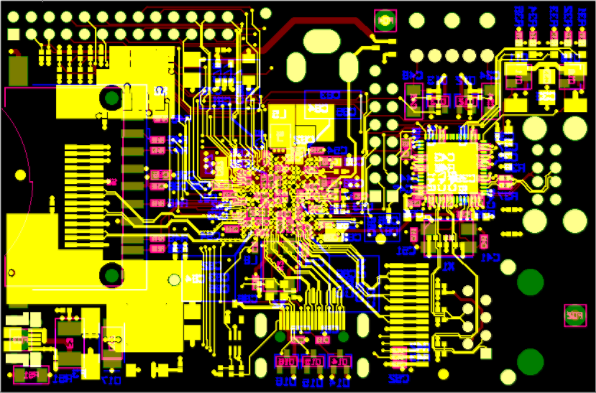1. Introduction to SMT Technology
Surface Mount Technology (Surfacd MounTIng Technolegy) is a new generation of electronic assembly technology that compresses traditional Electronic Components into devices that are only a fraction of a tens of volume, enabling high-density, high-reliability electronics assembly. Miniaturization, low cost, and automation of production. This miniaturized component is called: SMY device (or SMC, chip device). The process of assembling components onto a print (or other substrate) is referred to as an SMT process. Related assembly equipment is referred to as an SMT device.
At present, advanced Electronic Products, especially in computer and communication electronic products, have generally adopted SMT technology. The output of SMD devices in the world has increased year by year, while the output of traditional devices has been declining year by year. Therefore, SMT technology will become more and more popular as time goes by.
Or: SMT is the Surface Mount technology (short for Surface Mounted Technology), which is currently the most popular technology and process in the electronics assembly industry.
What are the characteristics of SMT?
The assembly density is high, the size of the electronic product is small, and the weight is light. The volume and weight of the chip components are only about 1/10 of that of the conventional plug-in components. After the SMT is generally used, the volume of the electronic product is reduced by 40% to 60%, and the weight is reduced by 60%. 80%.
High reliability and strong anti-vibration ability. The solder joint defect rate is low.
High frequency characteristics are good. Reduced electromagnetic and radio frequency interference.
Easy to automate and increase productivity. Reduce costs by 30% to 50%. Save materials, energy, equipment, manpower, time, etc.
Why use SMT
The pursuit of miniaturization of electronic products, the previously used perforated plug-in components can not be reduced;
The electronic products are more complete in function, and the integrated circuits (ICs) used have no perforated components, especially large-scale, highly integrated ICs, which have to use surface mount components;
Product batching, production automation, the factory must produce high-quality products at low cost and high yield to meet customer needs and enhance market competitiveness;
Development of electronic components, development of integrated circuits (ICs), and diversified applications of semiconductor materials;
The electronic science and technology revolution is imperative, chasing the international trend.
Printed circuit boards, form an essential part of any electronics equipment. The PCB Design and circuit board layout form an integral part of the design of the whole product, and it can be the key to the success of the product meeting its performance requirements in many instances. PCB technology has progressed significantly in recent years. The design technology has improved with PCB CAD systems and PCB software to layout the boards better, and also analyse the performance under conditions such as the operation at high frequencies. In addition to this, the technology for the manufacture of PCBs has improved enabling far smaller tracks to be used as well as incorporating features such as multilayer boards with blind vias, etc..

Circuit Board Layout,Circuit Board Design,Pcb Board Design,Printed Circuit Board
Orilind Limited Company , https://www.orilind.com
